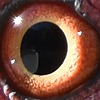HOME | DD
 TheBootesArtVoid — Photogenic Pijee (Wild)
TheBootesArtVoid — Photogenic Pijee (Wild)

#animal #animalphotography #animals #bird #birds #dove #doves #natural #nature #naturephotography #photo #photography #photographyanimals #photographynature #photographyphoto #photos #pigeon #pigeons #birdphotography #pigeonphotography #thebootesartvoid
Published: 2022-11-06 04:43:02 +0000 UTC; Views: 898; Favourites: 70; Downloads: 0
Redirect to original
Description
Species Name: Spotted Dove
Species Latin Name: Spilopelia chinensis
Native To: The Indian subcontinent and Southeast Asia
Conservation Status: Least Concern
Photo Taken At: My backyard
Size (length): 28-32cm (11.0 – 12.6 inches)
Size (Height): 10cm (3.9 inches)
Weight: 160g (5.6 oz)
Wingspan: 43-48cm (16.9 – 18.1 inches)
Lifespan: 8 years
Female Name: Hen
Male Name: Cock
Baby Name: Squab, Chick
Diet: Herbivore, granivore, omnivore
Lifestyle: Terrestrial, arboreal, altricial, oviparous, gliding
Group Name: Dole, dule, flight
Female Name: Hen
Male Name: Cock
Baby Name: Squab, chick
Mating Behavior: Monogamy
Reproduction Season: Year – round, peak in September – December
Incubation Period: 14 – 16 days
Baby Carrying: 1 – 2 eggs
Independent Age: 2 weeks
Sub Species:
Spilopelia chinensis Suratensis (Located in Pakistan, India, Nepal, and Bhutan)
Spilopelia chinensis Ceylonensis (Located in Sri Lanka)
Spilopelia chinensis Tigrina (Located in Bangladesh and northeast India through Indochina to Phillipines and the Sunda Islands)
Spilopelia chinensis Chinensis (Located in northeast Myanmar to central and east China)
Spilopelia chinensis Hainana (Located in Hainan)
Description:
The spotted dove is most easily recognized by the black back and spreads along the sides and back of their neck which is accompanied with white dots. They have creamy brown feathers along their front of their neck which continues down their stomach and legs. The rest of their features will generally be a mix between light grey to light brown in colour. They have short dark grey beaks with orange eyes. They have orange/reddish legs and feet.
Diet:
These birds are primarily herbivores and will generally eat seeds and grains. They may also supplement their diet with insects. These birds will also feed on scraps left behind by people which can vary from raw vegetables/meat/fruit, to cooked foods, and processed foods. These birds will generally feed on the ground but can be seen taking seeds from trees or from bushes. These birds are also known to fly into chicken coops to feed on the commercial food.
Behaviour:
These birds can be seen either alone, in pairs or in small flocks where they can be seen either foraging on the ground or perching on trees, fences, power lines, roofs, or other structures. They can often be heard doing their call which can be described as being a "cuk-cuk-coorrr" type sound, the females call will be similar to the males although somewhat quieter. Any aggressive behaviour from these birds (usually to other birds) will usually be accompanied by a threatening "kirrr" call.
These birds are monogamous in nature and will generally breed throughout the year with most the activity occurring between the months of September to December. The male will perform a display flight, a steep rising flight accompanied with loud wing-clapping. When he reaches a certain distance he will spread his wings and tail feathers as he glides back down to a perch. The male will also puff up the black and white feathers on his neck whilst bopping his head up and down whilst walking towards the female. Mated birds will preen each other specially around the head and neck, although monogamous if one of the mated pairs die the other mate will eventually moving on.
Both of the adults will build a nest together usually in bushes, trees, or other forms of low vegetation. Their nests will be made of flimsy sticks in the shape of a cup. Sometimes the nests will be placed on the ground or in structures. Both the parents will take turns in incubating the eggs for about 14-16 days, both parents will also care for and feed the young until they reach independence which occurs two weeks after hatching.
These birds do not generally migrate and tend to stay in the same area, that said some of these birds may disperse in order to colonize other areas if the areas are suitable for them.
Further Reading (general information):
Wikipedia: Spotted dove - Wikipedia
Birdlife: Spotted Dove | BirdLife Australia
Kidadl: 13 Amaze-wing Facts About The Spotted Dove For Kids (kidadl.com)
Animalia: Spotted Dove - Facts, Diet, Habitat & Pictures on Animalia.bio
Birds In Backyards: Spotted Dove | BIRDS in BACKYARDS
Related content
Comments: 3

👍: 1 ⏩: 1

👍: 0 ⏩: 1

👍: 1 ⏩: 0


























